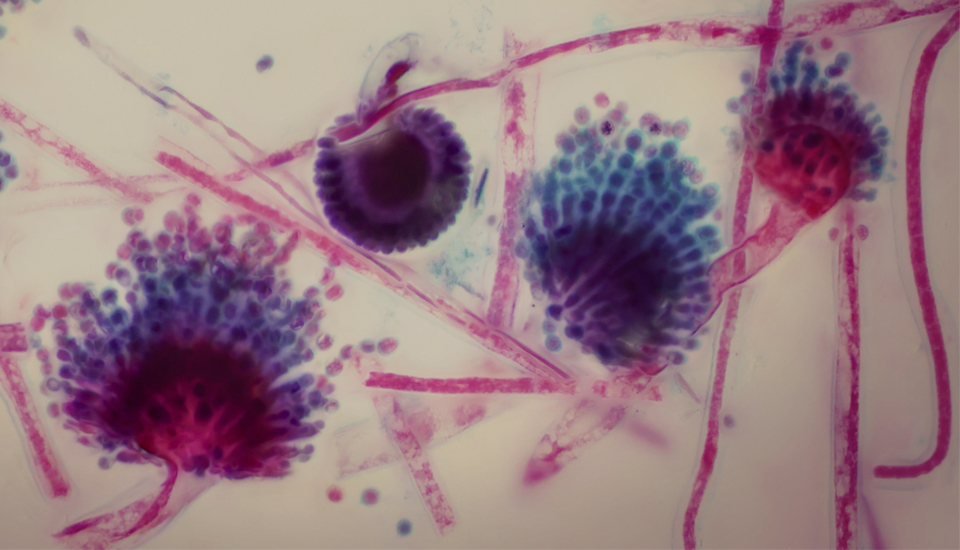Mold Exposure Symptoms Described by Our Functional Medicine Toronto Practice
POSTED ON NOVEMBER 24, 2022 BY TORONTO FUNCTIONAL MEDICINE CENTRE

Mold-related health issues can cause an array of health effects – did you know these can be addressed at our functional medicine Toronto clinic?
There are likely millions of mold species on this planet; and every day and everywhere, this exposure may trigger long-term health issues. Consequently, this might pose various health risks, such as disrupting bodily functions, skin, cognition, digestion, mental health, and more. “Molds produce allergens (substances that can cause allergic reactions) and irritants. Inhaling or touching mold or mold spores may cause allergic reactions in sensitive individuals,” confirms the United States Environmental Protection Agency.
Not everyone has the same reaction to mold though, as exposure can cause individual symptoms. Some might experience sniffles from mild contact; others may have severe shortness of breath from regular exposure. Consistent exposure to mold could trigger a chronic illness down the road. In one study on children, it was shown that asthma in kids ages 3-17 was linked to household mold. This is discerning, as this age group tends to spend 90% of their free time within indoor settings.
Mold spores are concealed indoors and outdoors, and we don’t always know when they’re lurking – overgrowth can happen in your ceilings, window panes, food, walls and fabrics! So, what can we do to prevent or treat mold-related illnesses? First, education is key. Here, we provide a brief guide to mold and the symptoms associated with exposures.
Quick Guide to Mold Toxicities
Scientists break down mold into allergenic, pathogenic and toxigenic categories.
Toxigenic molds can create mycotoxins (toxins specifically created by mold), and these can be absorbed via inhalation or by consuming/touching them; mycotoxins tend to be correlated with low immune function, neurological disorders, hepatoxicity and nephrotoxicity.
Even when people are already in good health, pathogenic molds can still cause infections. In fact, pathogenic molds can initiate severe health concerns, especially in immunocompromised individuals; sinus and digestive tract infections, as well as skin and lung infections, could result.
And finally, allergenic mold can be alarming if you’re already susceptible to mold allergies. Your immune system may be sensitive to particular mold spores, and may identify these spores as allergens; thus symptoms like sneezing, watery eyes, runny nose, itching and nasal congestion may be instigated.
So what are some of the common molds found indoors? Refer to the following table for details:
|
Type of Mold
|
Profile
|
|
Penicillium sp.
|
This species is known to hide in wallpaper, carpet, insulation, or old fabrics. Mycotoxins are occasionally formed; known to be the root cause of asthma and mild allergic reactions. |
|
Aspergillus sp.
|
Known to instigate lung infections, this is commonly found in damp, dusty areas of the home. Sometimes mycotoxins are produced from this species. |
|
Black mold
|
Considered toxic because mycotoxins are produced, and they can trigger serious respiratory health issues. Black mold can be found in wood or paper items around the home. |
Understanding mold and their impact on wellness may help prevent chronic disease related to it. Below, we highlight some markers for mold exposure:
13 Symptoms of Mold Exposure
-
Cognitive concerns (i.e. brain fog, memory loss, concentration issues).
-
Vertigo
-
Increased thirst and urination
-
Troubling regulating body temperature
-
Unexplained fatigue
-
Perplexing body aches (i.e. muscle, joint and nerve pain)
-
Tremors/involuntary movements
-
Sensitivity to light, red eyes
-
Tastes in your mouth that resemble metal
-
Digestive troubles (i.e. abdominal pain, diarrhea, nausea)
-
Respiratory concerns (i.e. coughing, asthma, wheezing, congestion, runny nose)
-
Skin rashes
-
Sneezing
Have you been exposed to mold? Our functional medicine practitioners can recommend lab tests to see if you’ve had contact with that or other environmental factors. We can provide an exposure profile to test for 40 species; genetic testing may also confirm if you’re susceptible to mold-related conditions. After analyzing your lab results, our healthcare providers can make suitable recommendations for functional medicine treatments. Some therapies may include medications, herbal extracts, essential oils, and binders to help lessen toxicities and treat this fungal growth in the body.
Our integrative approach to health can be applied to various health concerns regarding mold and other toxicities, nutritional deficiencies, heart disease, chronic pain, hormone imbalances, sexual health, sleep issues, adrenal fatigue, and infertility. Please don’t hesitate to reach the Toronto Functional Medicine Centre for assistance.
Recommended reading: The Nutrition-Cognition Link: Our Functional Medicine Toronto Centre Explains This
Our approach to wellness using integrative and functional medicine
If you require relief from chronic symptoms, we suggest treating the root cause for support and disease prevention. Our functional medicine approach to clinical care helps us understand your biology, while implementing an evidence-based approach to your treatments.
Functional medicine testing is available to our patients, which helps clarify what you might need for optimal function. Our integrative medicine consultants are happy to work with patients to craft a comprehensive treatment plan. Our patients may draw from other treatment modalities that we offer to help optimize health status., such as acupuncture, naturopathic medicine, herbal medicines, Western medicine, Traditional Chinese Medicine, bio-identical hormone replacement therapy, IV therapy, and more.
How can we help tackle the root cause of your health issues? Find out with our personalized approach to health care – our functional medicine Toronto clinic is currently accepting new patients. Click here to send us a note to request your consultation.
Disclaimer: The information in this article is designed for educational purposes only and is not intended to be a substitute for informed medical advice or care. This information should not be used to diagnose or treat any health problems or illnesses without consulting a doctor. Consult with a health care practitioner before relying on any information in this article or on this website.
References:
Akkmeteli, M. A. (1977, January). Epidemiological features of the mycotoxicoses. In Annales de la Nutrition et de l’Alimentation (pp. 957-975). Centre national de la recherche scientifique.
Bush RK, Portnoy JM, Saxon A, Terr AI, Wood RA. The medical effects of mold exposure. J Allergy Clin Immunol. 2006 Feb;117(2):326-33. doi: 10.1016/j.jaci.2005.12.001. Erratum in: J Allergy Clin Immunol. 2006 Jun;117(6):1373. Erratum in: J Allergy Clin Immunol. 2014 Nov;134(5):1217. PMID: 16514772.
Cox-Ganser JM. Indoor dampness and mould health effects – ongoing questions on microbial exposures and allergic versus nonallergic mechanisms. Clin Exp Allergy. 2015 Oct;45(10):1478-82. doi: 10.1111/cea.12601. PMID: 26372722; PMCID: PMC4667360.
Elias J. Anaissie, Shawna L. Stratton, M. Cecilia Dignani, Choon-kee Lee, Richard C. Summerbell, John H. Rex, Thomas P. Monson, Thomas J. Walsh; Pathogenic molds (including Aspergillus species) in hospital water distribution systems: a 3-year prospective study and clinical implications for patients with hematologic malignancies. Blood 2003; 101 (7): 2542–2546. doi: https://doi.org/10.1182/blood-2002-02-0530
Kuhn DM, Ghannoum MA. Indoor mold, toxigenic fungi, and Stachybotrys chartarum: infectious disease perspective. Clin Microbiol Rev. 2003 Jan;16(1):144-72. doi: 10.1128/CMR.16.1.144-172.2003. PMID: 12525430; PMCID: PMC145304.
Harding CF, Pytte CL, Page KG, Ryberg KJ, Normand E, Remigio GJ, DeStefano RA, Morris DB, Voronina J, Lopez A, Stalbow LA, Williams EP, Abreu N. Mold inhalation causes innate immune activation, neural, cognitive and emotional dysfunction. Brain Behav Immun. 2020 Jul;87:218-228. doi: 10.1016/j.bbi.2019.11.006. Epub 2019 Nov 18. PMID: 31751617; PMCID: PMC7231651.
“Indoor Air Quality – Moulds and Fungi,” Canadian Centre for Occupational Health and Safety, modified and viewed on November 18, 2022.
“Mold” from the Centers for Disease Control and Prevention (CDC), updated October 12, 2022, viewed on November 17, 2022.
“Mold: Symptoms of Exposure, Risks, and More” from Healthline, Medically reviewed by Marc Meth, MD, FACAAI, FAAAI — By Ann Pietrangelo — Updated on November 23, 2021, viewed on November 17, 2022.
“Mold and Health” from the United States Environmental Protection Agency, updated May 5, 2022, viewed on November 17, 2022.
Omotayo OP, Omotayo AO, Mwanza M, Babalola OO. Prevalence of Mycotoxins and Their Consequences on Human Health. Toxicol Res. 2019 Jan;35(1):1-7. doi: 10.5487/TR.2019.35.1.001. Epub 2018 Jan 15. PMID: 30766652; PMCID: PMC6354945.
Siyuan Xiao, Amanda L. Ngo, Pauline Mendola, Michael N. Bates, Anna L. Barcellos, Assiamira Ferrara, Yeyi Zhu,Household mold, pesticide use, and childhood asthma: A nationwide study in the U.S., International Journal of Hygiene and Environmental Health, Volume 233, 2021, 113694, ISSN 1438-4639, https://doi.org/10.1016/j.ijheh.2021.113694.

